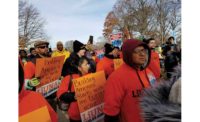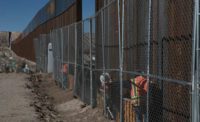Claiming a need to restrain numbers of "foreign nationals" working in the U.S. as the country pushes to restart the economy and lower domestic unemployment, President Donald Trump signed an executive order on June 22 that suspends issuance of new non-immigrant visas through Dec. 31, including guest worker and academic programs that may impact the construction sector. The restrictions take effect on June 24.
The order cited the COVID-19 pandemic as the main reason for suspending new visas, including the H-1B, H-2B, J and L programs. It also extends to year-end the administration's April 22-enacted freeze on new green cards applications for permanent residency.
“American workers compete against foreign nationals for jobs in every sector of our economy, including against millions of aliens who enter the United States to perform temporary work,” the order contends, despite research that shows otherwise. More than 20 million U.S. workers lost their jobs in industries where employers are currently requesting H-1B and L workers to fill positions, the order claims. About 525,000 jobs in 2020 would be affected by the suspension of these visas, say Trump Administration estimates.
"This policy is bad for the engineering industry and bad for the economy in general," says Jeff Urbanchuk, vice president of the American Council of Engineering Cos. "As we focus on rebuilding our economy, we need flexibility in our immigration policies that allow the best and the brightest from around the world to work in critical positions."
H-1B visas cover skilled workers and H-2B visas apply to seasonal workers. H4 visas apply spouses of those visa holders. Academics and researchers are affected under J-1 visas while L visas apply to the transfer of employees within a company with international offices.
The order does not affect those in the U.S. or outside who now have valid visas. It also exempts the optional practical training program (OPTS), which allows international students in STEM fields to work in the U.S. for up to three years after graduation if they remain on F student visas. Employers who hire them can gain tax breaks. Observers had feared the program would be eliminated or cut back.
The administration also is set to create an exemption for those who “are necessary to facilitate the immediate and continued economic recovery of the United States,” officials said, but no added details were provided.
Also announced were plans to shift the H-1B program to a merit-based system, prioritizing workers who are offered the highest wages. Last year, about 225,000 applications were filed for H-1B visas and around 85,000 visas were granted using a lottery system.
U.S. Chamber of Commerce CEO Thomas Donohue expressed concern on June 18 about such an administration move. Businesses would need assurance that, as the economy rebounds, both foreign and domestic talent would be available without "burdensome new regulatory requirements on businesses that employ foreign nationals," he said.
"As we focus on rebuilding our economy, we need flexibility in our immigration policies that allow the best and the brightest from around the world to work in critical positions. According to the National Science Foundation, half of the engineering master’s degrees awarded by U.S. universities were earned by foreign nationals on temporary visas," Urbanchuk noted.
"Not letting these talented professionals work in the U.S. reduces the overall STEM talent pool at a time when we need to redouble our efforts to attract more people into the field," he said.



